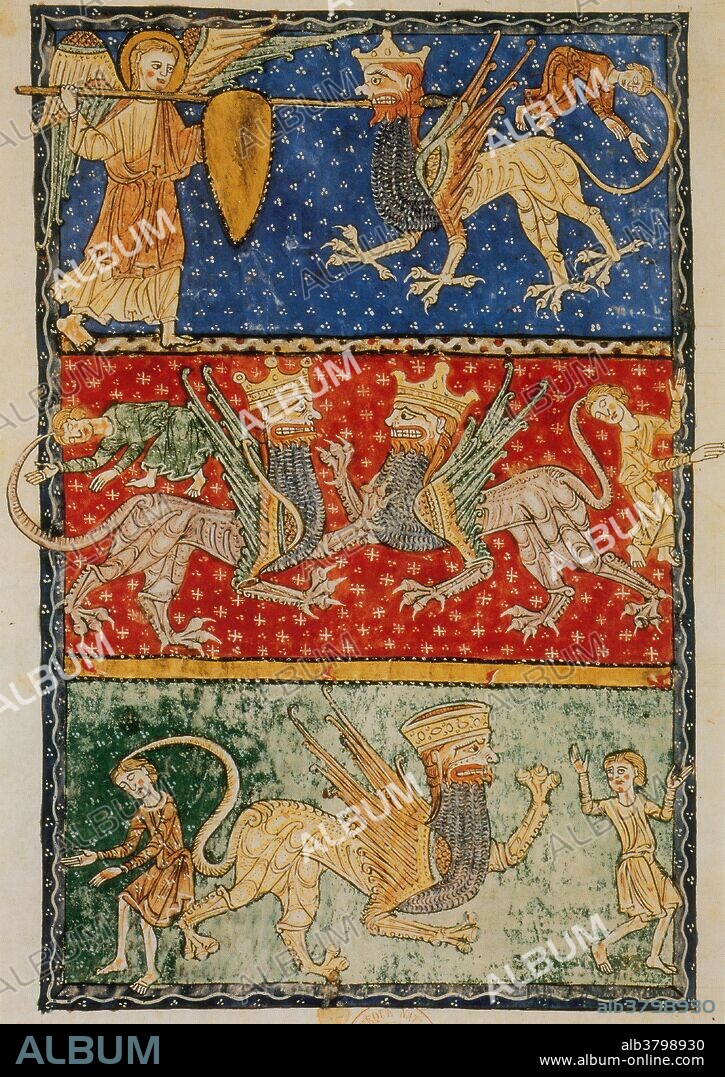alb3798930
Abaddon and Scourge of Locusts, Apocalypse

|
Zu einem anderen Lightbox hinzufügen |
|
Zu einem anderen Lightbox hinzufügen |



Haben Sie bereits ein Konto? Anmelden
Sie haben kein Konto? Registrieren
Dieses Bild kaufen.
Nutzung auswählen:

Titel:
Abaddon and Scourge of Locusts, Apocalypse
Untertitel:
Siehe automatische Übersetzung
The angel of the abyss is Abaddon described as a personified star who falls to Earth from heaven and is given the key to open the bottomless pit. Abaddon opens the pit, releasing a swarm of locusts.The plague of locusts resemble horses with crowned human faces, women's hair, lions' teeth, wings, iron breast-plates, and a tail with a scorpion's stinger that torments for five months anyone who does not have the seal of God on their foreheads. Commentary on the Apocalypse (Commentaria In Apocalypsin) was an eighth century work by the Spanish monk and theologian Beatus of Liébana. It is often referred to simply as the Beatus. The Beatus codices are among the most important Spanish medieval manuscripts and have been the subject of extensive scholarly and antiquarian enquiry. Illuminated manuscript, Beatus of San Andres de Arroyo, 1215.
Bildnachweis:
Album / Science Source / New York Public Library
Freigaben (Releases):
Bildgröße:
3282 x 4634 px | 43.5 MB
Druckgröße:
27.8 x 39.2 cm | 10.9 x 15.4 in (300 dpi)
Schlüsselwörter:
 Pinterest
Pinterest Twitter
Twitter Facebook
Facebook Link kopieren
Link kopieren Email
Email
